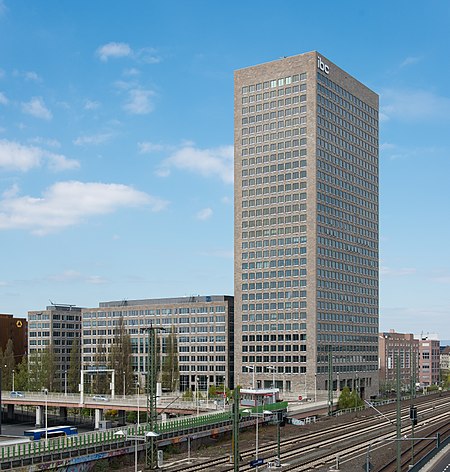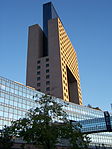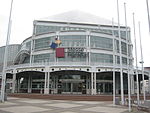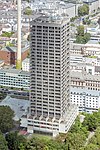IBC Tower

IBC Tower is a skyscraper in the IBC building complex in Bockenheim district of Frankfurt, Germany. At 30-storeys and 112 m (367 ft), it is considerably taller than the other two buildings named IBC Tower A, and IBC Tower B, which are both ten storeys. The IBC was built by Deutsche Bank on a design by architect Kohler and was completed in 2003. It is situated at Theodor-Heuss-Allee close to the Frankfurt Trade Fair grounds. Originally, Deutsche Bank planned as Investment Banking Center to concentrate their traders in the complex. This has never been implemented. Finally, Deutsche Bank sold the entire complex to the U.S. financial investor Blackstone Group and only rented Building B, in which the German Private and Business Bank AG and parts of the Deutsche Bank Human Resources division moved in. Building A was rented by the Degussa Bank GmbH, ING Real Estate Development and Construction and the INDUSTRIA rental company rented mbH. In 2006, Deutsche Bank also temporarily rented Building C, the IBC Tower, because of a major renovation in their company headquarters, the Deutsche Bank Twin Towers. The renovation was completed in 2011.
Excerpt from the Wikipedia article IBC Tower (License: CC BY-SA 3.0, Authors, Images).IBC Tower
Theodor-Heuss-Allee, Frankfurt Bockenheim (Innenstadt 2)
Geographical coordinates (GPS) Address Nearby Places Show on map
Geographical coordinates (GPS)
| Latitude | Longitude |
|---|---|
| N 50.1144 ° | E 8.6425 ° |
Address
IBC Tower
Theodor-Heuss-Allee 70
60486 Frankfurt, Bockenheim (Innenstadt 2)
Hesse, Germany
Open on Google Maps











